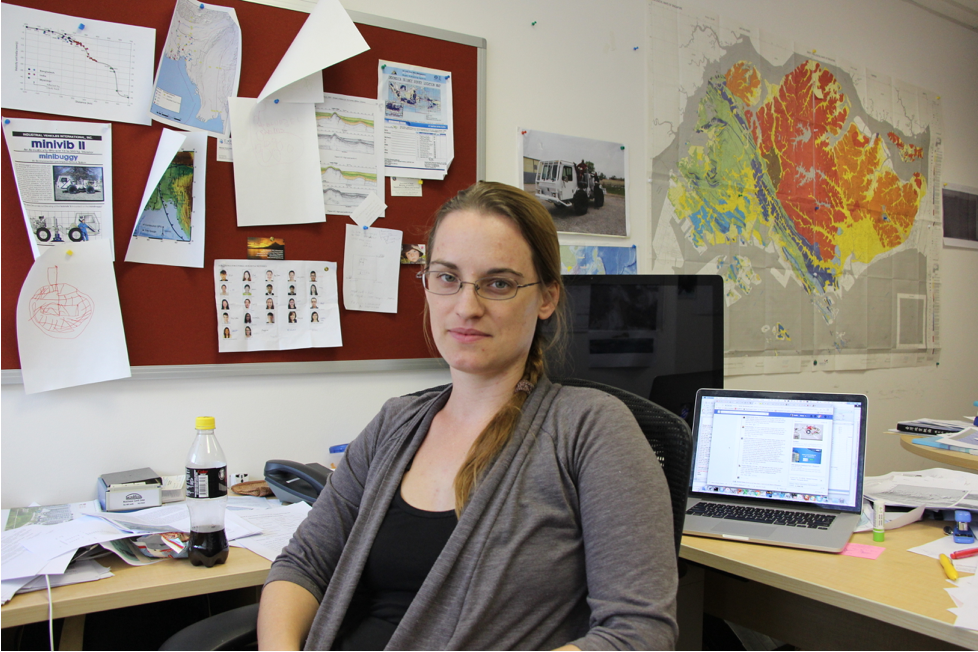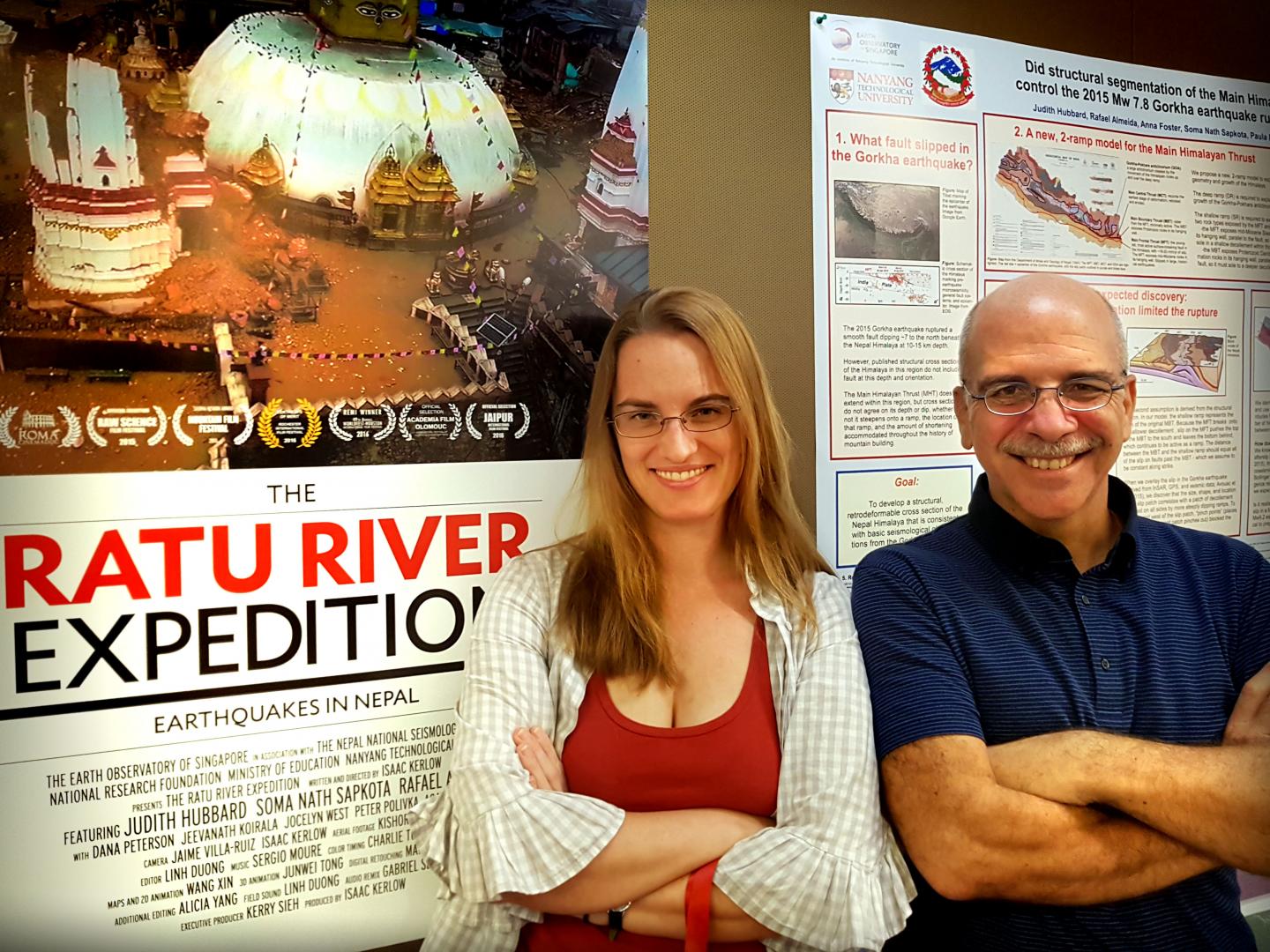Call her a nerd, but earthquake scientist Judith Hubbard loves geology, and she is not afraid to admit it.

Geology is all around us, evident to those who care to look, like structural geologist and self-proclaimed nerd, Judith Hubbard.
As a Principal Investigator at the Earth Observatory of Singapore (EOS), the tectonics researcher has covered almost every surface of her office with work.
Both sides of her office door are plastered, top to bottom, with expedition photos, while graphs and metre-long topographical maps of Nepal and Singapore stretch across her walls. A slew of geology books and stacks of paper threaten to engulf her entire desk.
“Well, they say an empty desk is a sign of an empty mind,” says the 33-year-old, who is also an Assistant Professor at the Asian School of the Environment in Nanyang Technological University.
Even after a whole day of work, Asst. Prof Hubbard still goes home to more geology. In fact, it follows her all the way to her front door. Each evening, she leaves the office with her husband, also a geologist at EOS.

“We walk home and our discussions are always about work,” she says. Although there are some days she would rather take a break from tectonics talk, she feels grateful for their shared interest.
“It’s really fun to have somebody you can share things with, your frustrations and your ideas,” she says.
Almost inevitably, the geologist couple gave both their children geology-related names. Their two-year-old, Evia Eleanor, is named after the Greek island Evia, the topic of Asst. Prof Hubbard’s husband’s PhD dissertation.
Six-year-old Luke Shackleton is named after the Antarctic explorer Ernest Shackelton. “I guess we can be pretty nerdy sometimes,” she says with a laugh.
Apart from research and teaching, Asst. Prof Hubbard’s passion for science has potentially opened up another career path for her. While most of her writing is published in journals, she is also a self-published author of five children’s books on topics like mountains and earthquakes—all of which will soon be translated into Korean.

But Asst. Prof Hubbard did not always want to be a geologist. In fact, the California native began college as a math major. That was until she learned that geology class involved field trips to Owens Valley in eastern California. Her professor needed volunteers to follow him up the mountains to collect rock samples. Then just 19 years old, she excitedly jumped into the van.
She had second thoughts as they drove up the precarious, narrow, and windy mountain road. But once they got to the top, her geology professor rolled up his pants and began wading barefoot into the icy mountain stream to fish out rocks.
“When I saw that I thought, ‘this is a cool job!’” recalls Asst. Prof Hubbard. “I then switched my major to geology.”
She has not looked back since. Almost 15 years later, she still loves fieldwork and collecting data from different environments.
“I find I do my best thinking when I’m doing fieldwork,” she says. “I’m so occupied physically that my brain has a chance to rest; I’m not looking at the computer screen all the time. It’s a form of meditation, almost.”

Fieldwork is also a great way to pique people’s interest in geology, says Asst. Prof Hubbard, who works on faults around South and Southeast Asia. Her and her team’s work in Nepal was documented in ‘The Ratu River Expedition’, a 2015 film by EOS' Art+Media group about earthquakes in Nepal.
“My favourite thing about the film is that it really documents what fieldwork is like,” said Asst. Prof Hubbard. “Science can seem pretty dry, but the fieldwork is always exciting. So even people who don’t understand the science can get interested in the process of doing fieldwork.”
But geological fieldwork is not without its challenges. Mementos from Asst. Prof Hubbard’s field trips—two power cables with visible holes in their plastic casing—are evidence of common problems faced during expeditions.
One of the cables is from Nepal and the other is from Bangladesh. Both were at some point connected to seismometers and were left to collect data for months at a time.
The team found that the equipment stopped working and upon investigation they found that the cables had been damaged in rather unexpected ways.

They suspect that teething baby jackals had chewed up the power cord in Nepal, while in Bangladesh, hungry ants were to blame.
From wildlife problems to food poisoning and political unrest, each expedition comes with its own obstacles. To Asst. Prof Hubbard, however, they are all part of the job.
“You don’t quite know what to expect until you start working someplace,” she said with a smile. “But the subject is interesting, and it’s so much fun to go outside.”